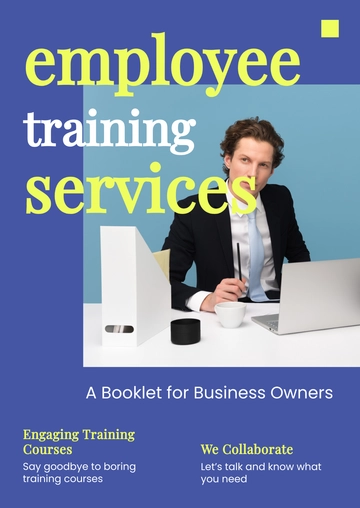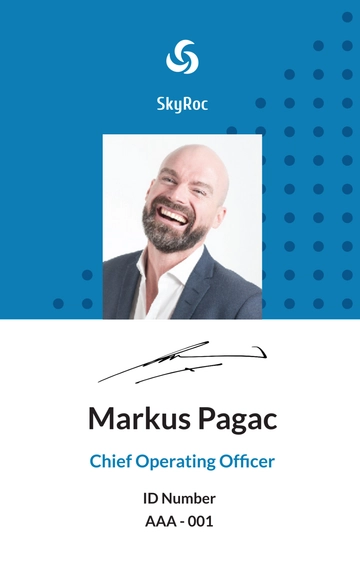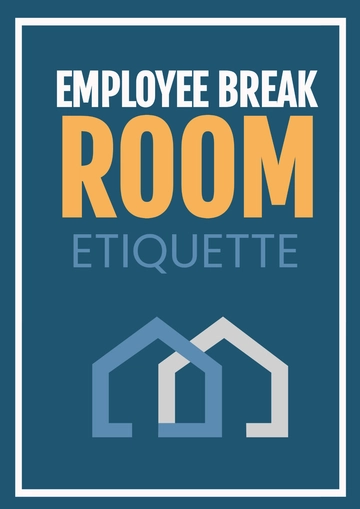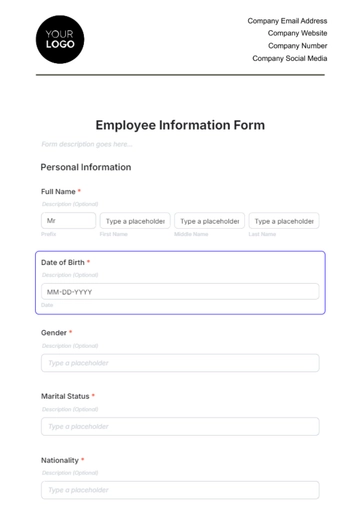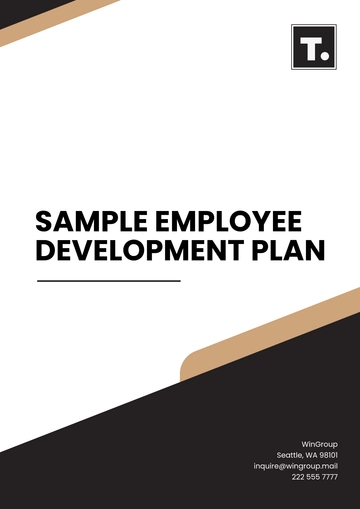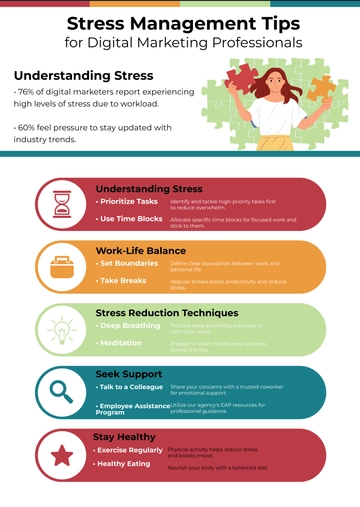Free Restaurant Employee Onboarding Procedure

I. Introduction
A. Welcome to [Your Company Name]
At [Your Company Name], we believe in creating a warm, welcoming environment not just for customers, but also for employees. More than just a restaurant, [Your Company Name] is a community that values hard work, creativity, and passion. The contribution of each team member is highly valued and growth is a shared journey.
B. Our Mission and Vision
The mission at [Your Company Name] is to provide high-quality food and exceptional service that exceed customers’ expectations. The aim is to create memorable dining experiences that keep customers coming back.
The vision is to be a leading restaurant in the community, known for commitment to quality and service. Each team member plays a crucial role in helping achieve this mission and vision.
C. Our Core Values
At [Your Company Name], we believe in a set of core values that guide our actions and decisions. These are the following:
Respect for All: At [Your Company Name], we believe in treating everyone with respect. This includes our customers, our employees, and our suppliers. We believe that respect fosters a positive work environment and leads to better customer service.
Commitment to Excellence: We strive for excellence in everything we do. From the food we serve to the service we provide, we aim to exceed expectations. We believe that this commitment to excellence sets us apart from our competitors.
Integrity: Integrity is at the heart of our operations. We believe in doing the right thing, even when no one is watching. This means being honest, transparent, and ethical in all our dealings.
Teamwork: We believe in the power of teamwork. We understand that we can achieve more when we work together. We encourage collaboration and open communication among our staff.
Continuous Improvement: We are committed to continuous improvement. We believe that there is always room for improvement and we constantly look for ways to improve our services, our menu, and our operations. We encourage our employees to share their ideas and suggestions for improvement.
These values are practices that should be incorporated into daily operations. As the journey begins, embracing these values and letting them guide actions and decisions is encouraged.
II. Pre-Arrival Preparation
Before the first day of a new employee at [Your Company Name], there are several tasks that need to be completed to ensure a smooth onboarding process. This preparation is crucial in setting the stage for the new employee’s success.
A. Prepare Onboarding Materials
Employee Handbook: The Employee Handbook is a comprehensive guide that provides information about [Your Company Name]'s policies, procedures, and expectations. It serves as a reference for employees throughout their tenure.
Training Schedule: A detailed training schedule is prepared for each new employee. This schedule outlines the training sessions that the employee will undergo, including their dates, times, and objectives.
Company Policies: Copies of [Your Company Name]'s company policies are provided to the new employee. These policies cover various aspects such as code of conduct, dress code, and health and safety regulations.
Workstation Setup: The workstation of the new employee is set up prior to their arrival. This includes arranging necessary equipment and tools that the employee will need to perform their duties.
Uniform and Nametag: [Your Company Name] provides uniforms and nametags to all its employees. These are prepared in advance and given to the new employee on their first day.
B. Set Up Workstation
Workstation Assignment: Each new employee is assigned a specific workstation. This is where they will perform most of their duties.
Equipment Setup: Necessary equipment, such as the point-of-sale system, is set up at the workstation. This equipment is tested to ensure it is functioning properly.
Supply Stocking: The workstation is stocked with necessary supplies. This includes items like pens, notepads, and other stationery.
Workstation Tour: On their first day, the new employee is given a tour of their workstation. This helps them familiarize themselves with their work area.
C. Uniform and Nametag
Uniform Fitting: Prior to the first day, a uniform fitting is scheduled for the new employee. This ensures that their uniform is comfortable and fits well.
Uniform Care Instructions: The new employee is given instructions on how to care for their uniform. This includes washing instructions and guidelines on maintaining the uniform’s appearance.
Nametag Preparation: A nametag bearing the new employee’s name is prepared. This helps customers and other staff members identify the new employee.
Nametag Placement Guidelines: The new employee is given guidelines on where to place their nametag. This ensures consistency among all staff members.
Uniform and Nametag Handover: On the first day, the new employee is given their uniform and nametag. They are expected to wear these during their working hours.
Uniform and Nametag Policies: The new employee is briefed on the policies regarding the uniform and nametag. This includes when and where they should be worn, and the consequences of not adhering to these policies.
III. First Day Schedule
The first day at [Your Company Name] is designed to be informative and welcoming. It’s a day filled with introductions, learning, and getting accustomed to the new work environment. The following table provides a detailed schedule of the activities planned for the first day:
Time | Activity |
|---|---|
9:00 AM - 10:00 AM | Welcome and Introduction to Team |
10:00 AM - 11:00 AM | Review of Employee Handbook |
11:00 AM - 12:00 PM | Workstation Setup |
12:00 PM - 1:00 PM | Lunch Break |
1:00 PM - 3:00 PM | Training on Company Policies and Procedures |
3:00 PM - 5:00 PM | Introduction to Duties and Shadowing |
The first day is a crucial part of the onboarding process. It sets the tone for the employee’s experience at [Your Company Name]. The activities planned aim to make the new employee feel welcomed, provide them with necessary information about their role, and introduce them to their colleagues and work environment.
The schedule is structured in a way that it balances learning with interaction. Starting with a warm welcome and team introduction helps the new employee feel a part of the team. Reviewing the Employee Handbook and Company Policies ensures that the employee understands the expectations and standards of [Your Company Name]. The workstation setup gives the employee a sense of their own space, and the introduction to duties provides a clear understanding of their role. The day ends with shadowing a colleague, which allows the new employee to observe and learn the practical aspects of their job.
IV. Employee Training
Training is a critical part of the onboarding process at [Your Company Name]. It equips new employees with the necessary skills and knowledge to perform their roles effectively. The training program is comprehensive and tailored to meet the needs of each role within the restaurant.
A. Orientation Session
The orientation session is designed to familiarize new employees with the restaurant and its operations. It includes:
Company History: An overview of [Your Company Name]'s history, including its founding, growth, and key milestones. Understanding the company’s history helps employees appreciate the journey and the values that have guided [Your Company Name] to its current success.
Mission and Vision: A detailed explanation of the restaurant’s mission and vision. These serve as the guiding principles that drive all decisions and actions within the restaurant.
Core Values: A discussion on the core values. These values define the culture at the restaurant and guide how employees interact with each other and with customers.
B. Role-Specific Training
Role-specific training equips new employees with the skills and knowledge necessary to perform their specific roles. It includes:
Customer Service Protocol: Training on how to interact with customers, handle complaints, and provide excellent service. This training is crucial as it directly impacts customer satisfaction and the reputation of the restaurant.
POS System Training: Training on how to use the point-of-sale (POS) system. This system is used for processing customer orders and managing transactions. It’s essential for employees to be proficient in using this system to ensure efficient operations.
Health and Safety Standards: Training on the restaurant’s health and safety standards. This includes food handling procedures, cleanliness standards, and emergency procedures. Ensuring the health and safety of both the employees and the customers is a top priority.
Menu Knowledge: Training on the restaurant’s menu. Employees are taught about the ingredients, preparation methods, and presentation of each dish. This knowledge is important in answering customer queries and making recommendations.
Beverage Knowledge: Training on the restaurant’s beverage offerings. This includes knowledge about different types of wines, beers, and cocktails, as well as coffee and tea. Employees are also taught how to properly serve these beverages.
Conflict Resolution: Training on how to handle conflicts and difficult situations. This includes dealing with customer complaints, resolving conflicts among team members, and managing stressful situations. This training helps employees maintain a positive and professional demeanor even in challenging situations.
V. Performance Review and Feedback
Performance review and feedback are integral parts of the employee development process. They provide employees with a clear understanding of their strengths, areas for improvement, and their progress towards their performance goals.
A. Performance Review
Performance reviews are conducted periodically to assess the employee’s performance. They include:
Goal Setting: At the start of the review period, clear and measurable performance goals are set for each employee. These goals align with the restaurant’s objectives and the employee’s role.
Performance Assessment: The employee’s performance is assessed against the set goals. This assessment considers various factors such as the quality of work, customer feedback, and teamwork.
Rating: Based on the performance assessment, the employee is given a performance rating. This rating reflects the employee’s overall performance during the review period.
Review Discussion: The performance review results are discussed with the employee in a one-on-one meeting. This discussion provides an opportunity for the employee to understand their performance, ask questions, and receive feedback.
Performance Improvement Plan: If necessary, a performance improvement plan is developed for the employee. This plan outlines the steps the employee needs to take to improve their performance.
B. Feedback
Feedback is a continuous process that complements the performance review. It includes:
Ongoing Feedback: Employees receive ongoing feedback on their performance. This feedback is provided informally during day-to-day interactions.
Constructive Feedback: Constructive feedback is provided to help employees improve their performance. This feedback is specific, actionable, and delivered in a supportive manner.
Positive Feedback: Positive feedback is provided to recognize and reinforce good performance. This feedback motivates employees and encourages them to continue performing well.
Feedback from Peers: Feedback is also sought from peers. This peer feedback provides a different perspective on the employee’s performance.
Feedback Discussion: Feedback is discussed with the employee in a constructive and supportive manner. This discussion helps the employee understand how they can improve their performance.
Action Plan: Based on the feedback, an action plan is developed. This plan outlines the steps the employee will take to address the feedback.
VI. Frequently Asked Questions (FAQs)
Q: What is the purpose of the orientation session during the employee training?
A: The orientation session is designed to familiarize new employees with the restaurant and its operations. It includes an overview of the restaurant’s history, a detailed explanation of the mission and vision, and a discussion on the core values.
Q: What does the role-specific training involve?
A: Role-specific training equips new employees with the skills and knowledge necessary to perform their specific roles. It includes training on customer service protocol, use of the point-of-sale (POS) system, health and safety standards, and knowledge about the menu.
Q: What activities are planned for the first day?
A: The first day at the restaurant includes a welcome and introduction to the team, a review of the Employee Handbook, workstation setup, a lunch break, training on company policies and procedures, and an introduction to duties and shadowing.
Q: How is performance review and feedback conducted?
A: Performance reviews are conducted periodically to assess the employee’s performance against set goals. Feedback is a continuous process provided regularly to help employees improve their performance. If necessary, a performance improvement plan is developed.
Q: Who should I contact if I have questions or concerns?
A: If employees have any questions or concerns, they can reach out to their immediate supervisor or the Human Resources department.
- 100% Customizable, free editor
- Access 1 Million+ Templates, photo’s & graphics
- Download or share as a template
- Click and replace photos, graphics, text, backgrounds
- Resize, crop, AI write & more
- Access advanced editor
Guarantee seamless onboarding experiences for new hires with the Restaurant Employee Onboarding Procedure Template on Template.net! This practical resource offers an editable format to outline standardized onboarding procedures and protocols. Utilize the customizable features to tailor the onboarding process. With the integrated AI Editor Tool, streamline onboarding without the stress!
You may also like
- Employee Letter
- Employee ID Card
- Employee Checklist
- Employee Certificate
- Employee Report
- Employee Training Checklist
- Employee Agreement
- Employee Contract
- Employee Training Plan
- Employee Incident Report
- Employee Survey
- Employee of the Month Certificate
- Employee Development Plan
- Employee Action Plan
- Employee Roadmap
- Employee Poster
- Employee Form
- Employee Engagement Survey
